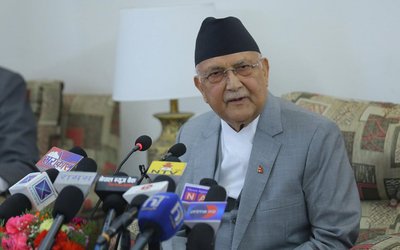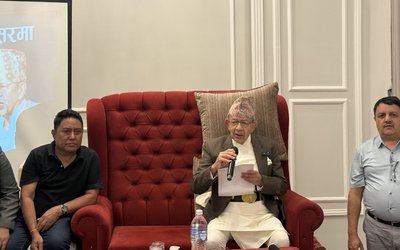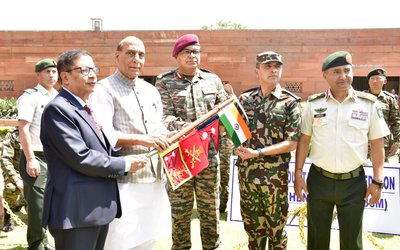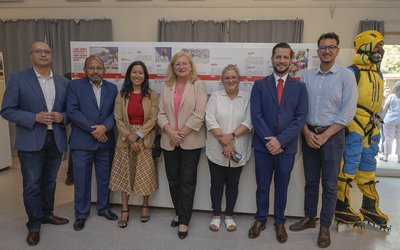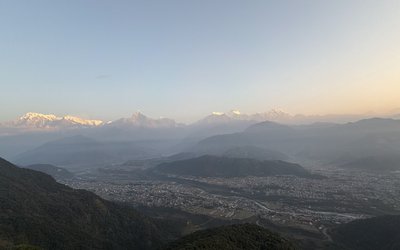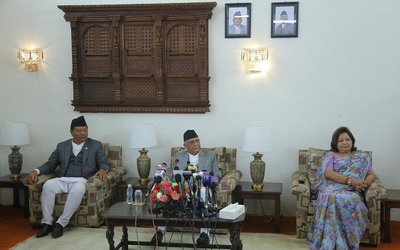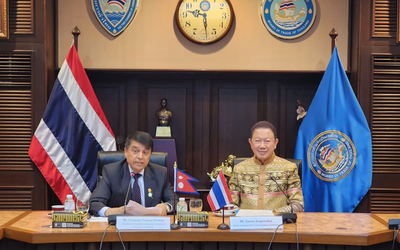
Although many programs have already been launched in the far western region to improve the overall status of the agriculture sector, nothing much has changed at the grass root level.
With a subsistence-based agriculture and lowest level of productivity, the hills of the far western region of Nepal have a nutrition status of the people at a much lower level than in other parts of Nepal.
Dominated by farmers of small landholding, with rain fed agriculture, the region needs community level intervention in increasing the food productivity. Practical Action Nepal’s new project aims to address that need.
Where there is need, there is Practical Action Nepal -- it is targeting the poor and vulnerable communities of far western region.
With financial support from European Union, Practical Action has been implementing Promotion of Sustainable Agriculture for Nutrition and Food Security Project (POSANFS), directly targeting 7,000 households, including 20 percent Dalits and 50 percent women from Achham, Bajhang, and Bajura and Doti districts.
Targeting Dalits, women and marginalized communities in far west where poverty is rampant and people are suffering from stunting, with nutrition related health problems, the overall objective of the project is to contribute to enhance regional food and nutritional security articulated in the periodic and multi sector nutrition plan of the Government of Nepal.
Unlike other big projects, the project is directly reaching the communities and bringing change at the household level. This means the program intervenes with the farm practices and traditions, showing them new ways and better technologies to do the same thing.
“Our objective is to increase productivity of goat and vegetable/spice crops. This will be done through developed and strengthened inclusive and pro-poor value chain to commercialize goat, vegetable and spice crops, improved nutritional status of women, children and vulnerable groups, enhanced capacity of local non-state actors to constructively engage with local government for sustaining the project outcome, develop enabling environment for food and nutritional security at district,” said Dr. Sujan Piya, Ph.D, Head of Program Agriculture, Food Security and Market, Practical Action
“We have already started initial programs in the districts. Nutrition clubs have already been set up and health campaign started and the programs of kitchen garden have already moved ahead. Market management committees have already been formed at the cluster level and strengthening the agro-vet,” said Piya.
Although everyone is talking about food insecurity and nutrition related issues of far west, a district level food security plan is still absent. “The project is also supporting the preparation of the district level food security plan. Each district should have a district level food and nutrition security plan and this project will support its formulation,” said Piya.
Unlike other regions of Nepal, the nutrition issue is very complex in far west. “Nutrition cannot be handled only through food security because most of our farmers are small farmers with small landholding. Farmers need to be involved in off-farm activity as these kind of off-farm activities have major contribution in their livelihood," said Dr. Piya.
Studies have shown that the average productivity of Nepalese agriculture is the lowest compared to other South Asian countries. The level of commercialization is also very poor with only 15% of agriculture produce linked to the urban market centers. The situation, particularly in rural hills and mountain areas, is even worse.
In this context, Practical Action Nepal, in its new strategic period (2012-17), puts more emphasis on improving agricultural productivity and commercialization in Nepal.
According to the studies, the higher level of food and nutritional insecurity in Nepal can be related with insufficient per capita availability of food. This is due to low productivity with low level of commercialization in agriculture.
“Erratic and unpredictable weather and the small size of holding with fifty percent of households having less than 0.5 hectares of land, poor agriculture technology with inadequate input intensification and poor market linkages are the reasons for low productivity,” said Piya.
There is the need to change the present enabling environment for agriculture commercialization and employment opportunities for off-farm job in rural areas and poor nutrient utilization. As people don’t have economic access to nutrients in diet and lack awareness on micronutrients, with rigid food habit of rural areas, nutrient utilization is very poor in these areas.
With the intervention at the community level, Practical Action is bringing change in the status of nutrition in the far western region.
- IME GROUP: Expands Into Paper Industry
- Mar 24, 2025
- CPN UML: Instigated By India
- Mar 23, 2025
- ADB’S CHIEF ECONOMIST: Nepal Reduces Poverty
- Mar 11, 2025
- FM DR. DEUBA: A Successful Visit
- Mar 11, 2025
- MD GHISING: Target Of Personal Grudge
- Mar 09, 2025
